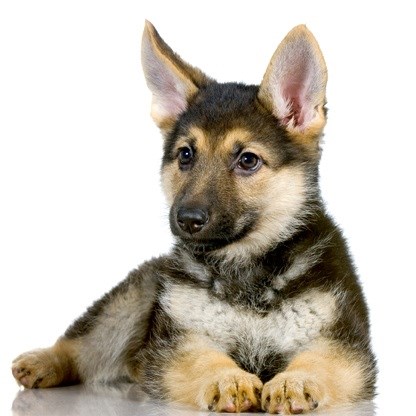While viewing the Facebook page of one of the rescue groups I follow, I was met with a photo that absolutely shocked me.
When I first saw the image of the dog, I could not believe what I was seeing was real and not a Photoshopped picture of a dog that had been abused. This poor dog was not abused in the typical way we consider abuse, but in a way that was just as horrible. This poor dog had been fed into morbid obesity.
The dog, an Australian shepherd, should weigh approximately 55 pounds, but this dude tipped the scales at 180 pounds. My first thought was that it had an untreated medical condition such as hypothyroidism, which slows down the body's metabolism and may result in weight gain. But the information provided stated the dog's blood work was normal. . . it was just fat!
Most people's reaction to something like this would be to wonder what was wrong with the dog that caused it to eat so much? But let's remember, this dog did not feed itself, this morbidly obese dog got this way at the hands of humans. Obesity in dogs is caused by owners. Medical conditions aside, obesity in dogs is a human problem, not a canine one.
Obesity is the result of too much input and not enough output. It's a pretty simple concept, really. In simple terms, it means too much food and not enough exercise, both of which are provided by humans. Being a responsible dog owner not only involves training and managing your dog's behaviour. It also entails providing adequate exercise and monitoring its nutrition so that it maintains a healthy body weight ensuring optimum health.
Yes, your dog's health is also your responsibility.
As humans, we have a plethora of food options at our doorstep. We can choose any one of those options: processed food, fast food, organic food, non-organic food, etcetera, to feed ourselves. But our dogs have only one choice and that is the one that we, as dog owners, provide for them.
Fortunately, humans also have a plethora of feeding options for their dogs, all of which will either benefit their dog's overall health, or not.
Most people opt for processed commercial food because it is inexpensive and convenient, much like the food we purchase for ourselves at drive-through restaurants. We all know of the long-term health issues caused by eating too much of this type of food. The same health issues apply to dogs. I'm not implying that all commercial food is bad. There are healthy options within this category, just like there are healthy fast food options for humans. But humans have to make the choice to buy it and feed it to their dogs.
Personally, I prefer to feed my dogs a raw diet that consists of raw meat, bones and vegetables. It's not for everyone and if you are the kind of person who doesn't want to know how your steak gets to your plate or even touch it when it is uncooked, then feeding your dog raw is probably not the best route.
Regardless of which food you choose, portion size also needs to be considered. If you follow the guidelines suggested and your dog starts to get fat, then cut back. If your dog is getting too thin, feed it a bit more. It's just like feeding ourselves.
But placing your dog on a raw diet or even on a super high-quality commercial food diet is not going to guarantee your dog stays fit and trim. You still have to provide the other half of the equation - exercise.
Gosh, humans dislike exercise. I also work in the fitness industry and the excuses I hear as to why people can't work out can be downright embarrassing.
You may be able to justify skipping a workout, but it's not fair to put your exercise drama on your dog. Given the chance, a dog will choose a walk over a sandwich every time. . . humans, not so much.
If your dog is fat, don't point your finger at your dog. Point it at yourself and begin to make the necessary changes that will benefit both you and your dog.
Joan Klucha has been working with dogs for more than 15 years in obedience, tracking and behavioural rehabilitation. Contact her through her website k9kinship.com.



